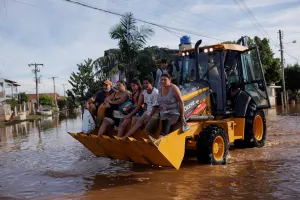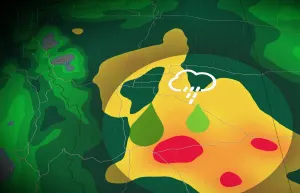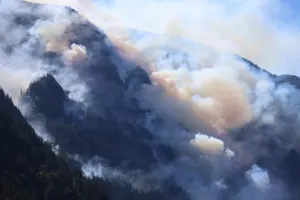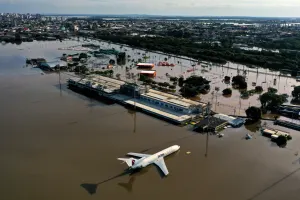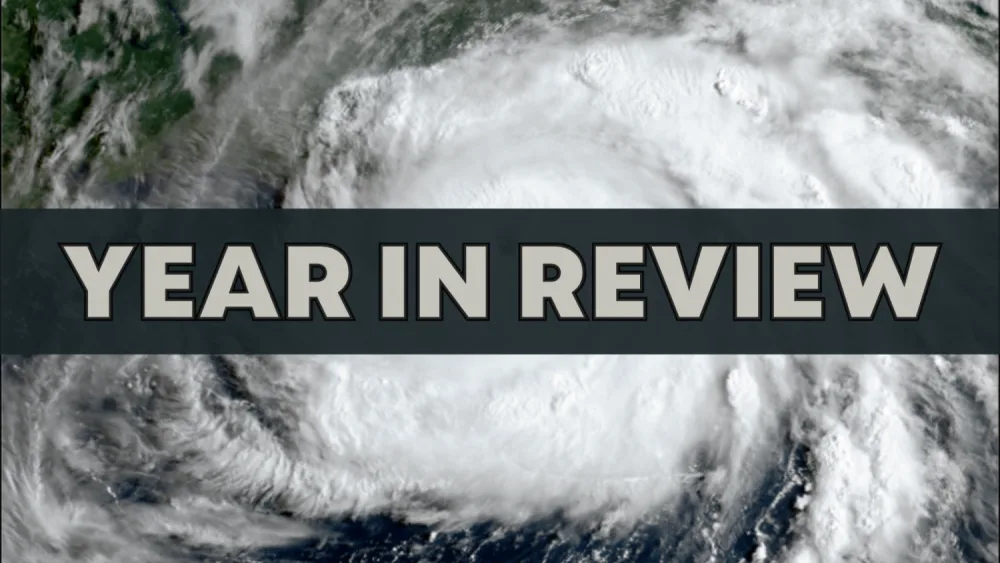
Here's a look back at the biggest international weather disasters of 2021
Extreme heat, powerful tornadoes, and impressive volcanoes fill out our list of the most impactful natural disasters of 2021.
This Day In Weather History is a daily podcast by Chris Mei from The Weather Network, featuring stories about people, communities and events and how weather impacted them.
--
As we wind down the last days of 2021, we can look back on 12 months of severe weather disasters in the United States and internationally. The biggest, most record-breaking stories all involved the extreme heat that gripped much of the world, but volcanoes, tornadoes and hurricanes also made the list. Here are the ones that stood out most.
MID-JULY: EUROPE FLOODS CLAIM HUNDREDS OF LIVES
Weather extremes can happen most anywhere in the world if the right ingredients line up, and this was very true in Europe in mid-July.
From July 12-15, torrential rains in northern Europe – in the 150 mm range – triggered widespread, extreme flooding that killed more than 200 people in Germany and Belgium, and sent thousands of people in those countries and the neighbouring Netherlands fleeing for safety.
Major infrastructure damage occurred as well, with entire houses just swept away. For many of the worst-hit areas, that was the most intense flooding on record, and certainly not for many years.
People in that part of Europe may have to brace for similar disasters in the future: a study released a few months later found that downpours in the region can now be at least 20 per cent more intense – and many, many times more intense in the upper range of probability – than before the effects of Climate Change began to kick in.
JULY WAS THE HOTTEST MONTH IN HUMAN HISTORY
The past summer was a scorcher in many places, including Canada, and for the world as a whole, the month of July was a record-breaker: data released in August by the U.S. National Oceanic and Atmospheric Agency found that July 2021 was the hottest ever recorded in human history.
More specifically, the combined land and ocean-surface temperature in July was 0.93°C above the 20th-Century average, and the land-only temperature 1.54°C above average – also the hottest on record, and topping the last record set in 2012.
Worldwide, Asia notched its hottest-ever July, Europe marked its second-hottest, and in North America, South America, Africa and Oceania, the month was one of those regions' top-10.
Canada was not immune to the furnace. The Interior B.C. village of Lytton shattered Canada's hottest-ever temperature record three days running at the end of July, topping out at 49.6°C on July 29th. The following day, a wildfire burned down much of the village.
AUGUST 11TH: EUROPE MARKS ITS HOTTEST-EVER TEMPERATURE
The heat just kept piling on as the summer progressed, and it was Europe's turn to enter the history books in mid-August.
A preliminary reading at a weather station in Sicily on August 13th found a daily max of 48.8°C. If verified by the World Meteorological Agency, it will be the continent's hottest-ever recorded temperature, narrowly edging out a reading of 48°C in Athens in 1977.
That extreme heat took a big toll on the continent, including Italy. Around when that new record was notched, multiple wildfires were burning across the south of the country, stoked by strong winds. Firefighters carried more than 500 operations in just 12 hours in Sicily and Calabria alone before conditions improved and the fires were brought to heel.
AUGUST 14TH: RAIN FALLS AT THE GREENLAND SUMMIT FOR THE FIRST TIME
Even the Arctic wasn't safe from hot-weather firsts in 2021.
While a shower or two isn't out of the ordinary at the peak of August for most places, the raindrops that fell at the frozen peak of Greenland were a complete first for the site, at least as long as records have been kept. What's more, the same site marked above-zero temperatures for nine hours, only the third time that's happened.
The elevation of the site is 3,216 metres above sea-level, about as high as Mount Charleston in Jasper National Park.
What's that record doing on a list of the most notable natural disasters of 2021? Aside from the fact it's another milestone as Climate Change ramps up, it's an ominous marker toward the melting of the Greenland ice sheet. Should it suffer a complete melt, there is enough water frozen in that sheet alone to raise global sea levels by as much as 7 metres.
SEPTEMBER 19TH: SPAIN'S CUMBRE VIEJA VOLCANO BEGINS A THREE-MONTH ERUPTION
The island of La Palma in Spain's Canary Islands has long been a mecca for tourists, but it also boasted a thriving local economy. All of that was overshadowed on September 19th, when the island's Cumbre Vieja volcano began erupting.
It wouldn't calm itself until December 13th, some three months later, and even then, authorities were so fearful of giving false hope that they didn't declare the eruption over until Christmas Day.
Three months is a long time for a volcano to be erupting, and the devastation was widespread. Lava flows engulfed some 3,000 homes and other structures, including churches and the banana plantations that make up half the local economy. The lava field covers an area of more than 1,200 hectares, but though 7,000 people were forced to flee, no one was reported killed.
Another astounding bright spot: searchers digging in the area of several beehives found that though they'd been buried by the ash for 50 days, incredibly, most of the bees within had survived:
NOVEMBER CAPS OFF THE THIRD MOST ACTIVE HURRICANE SEASON ON RECORD
With its 30 named storms, the 2020 Atlantic hurricane season was a tough act to follow, but the 2021 season made a go of it. When the "official" end of the season rolled around on November 30th, the 21 named storms that had come and gone added up to the third most active storm season on record.
It was also the third time the traditional 21-name list was exhausted, but unlike 2020 and 2005, there were no subsequent storms requiring the use of the backup name list. Among those 21 storms were seven hurricanes, including four "major" hurricanes of Category 3 or greater strength.
Eight of those storms made landfall in the U.S., and four of them – Fred, Elsa, Ida and Nicholas – each did more than a billion dollars worth of damage.
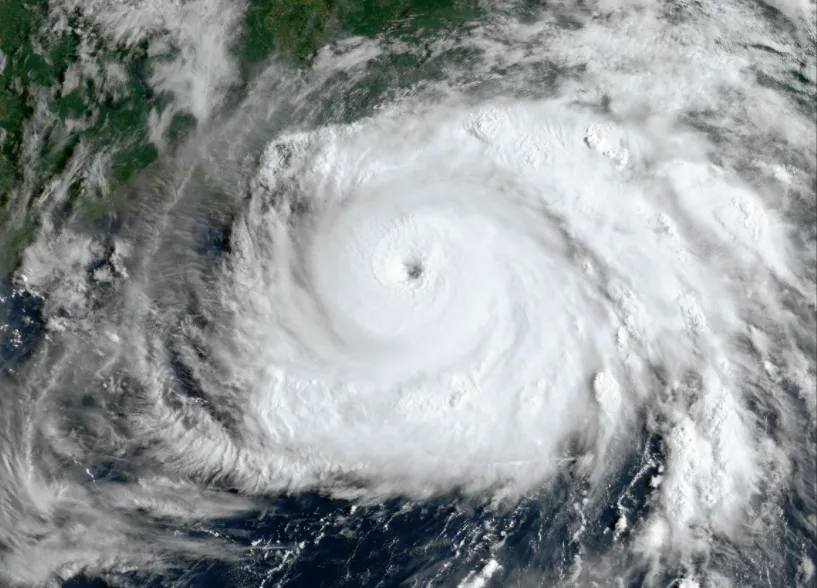
Hurricane Ida approaching Louisiana on August 29, 2021. (NOAA)
Hurricane Ida, a Category 4 storm at its peak, was especially impactful. Ida landfall in Louisiana with estimated winds of 240 km/h, with wide-ranging effects as far as New Jersey and New York.
In all, the storm did an estimated $64 billion in damage, and claimed the lives of 96 people.
DECEMBER 10TH-11TH: SCORES KILLED AS VIOLENT TORNADOES RIP THROUGH THE U.S.
The night of December 10th will live in infamy for people in Kentucky and surrounding states, thanks to a massive tornado outbreak that lasted for hours and left scores dead.
The most destructive of the dozens of tornadoes confirmed that night was an EF-4 monster that ripped a track of 266 kilometres, with maximum winds of 305 km/h.
In all, around 90 people have been confirmed killed in that outbreak, including 77 people in Kentucky alone, along with hundreds more injured. In all, it was the deadliest tornado the state had ever seen.
In neighbouring Illinois, six people were killed when a tornado struck an Amazon facility in the town of Edwardsville.
--
For more top weather stories from 2021, listen to today's podcast. listen to today's episode of "This Day In Weather History."
Subscribe to 'This Day in Weather History': Apple Podcasts | Amazon Alexa | Google Assistant | Spotify | Google Podcasts | iHeartRadio | Overcast'







